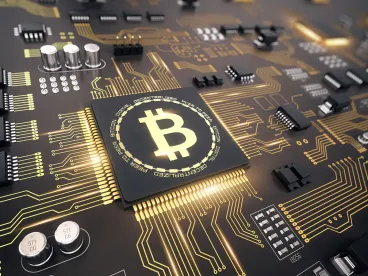Minters of collectible non-fungible tokens (NFTs) have taken a wide range of approaches. In addition to variations in the means of distribution, token standards, governing smart contracts and platforms on which initial sales or transfers are made, the terms, conditions and content licenses (or lack thereof) under which users take possession of an NFT often differ from project to project. The recent delisting by OpenSea of the original (or “v1”) version of the popular “CryptoPunks” NFT art collection in light of a takedown notice issued pursuant to the Digital Millennium Copyright Act (DMCA) by the collection’s creator, Larva Labs, and the ensuing DMCA counter-notification by v1 owners, illustrates some of the challenges that can result from the absence of clear written legal terms governing an NFT distribution.
What Happened With CryptoPunks?
In 2017, Larva Labs offered the original collection of 10,000 CryptoPunks NFTs (now commonly referred to as the “v1” CryptoPunks) for free. However, Larva Labs quickly discovered that the Ethereum smart contract governing the collection contained a code error that resulted in the buyer of a CryptoPunk receiving back the proceeds of CryptoPunk resales, leaving the seller with nothing. This prompted Larva Labs to create a new “v2” collection of 10,000 CryptoPunks NFTs governed by a different smart contract (without the v1 smart contract defect), each of which is associated with the same CryptoPunk image as one of the v1 CryptoPunk NFTs. Due to the blockchain-based nature of the v1 NFTs, Larva Labs could not simply fix or replace the problematic smart contract through an update or erase and replace the v1 NFTs. As indicated in a series of tweets by Larva Labs, after creation of the new smart contract, each v1 CryptoPunk that was sold was returned to the wallet to which it was initially issued (i.e., the owner who originally received the NFT from Larva Labs for free). Each v2 NFT was then “airdropped” to the wallet address of the holder of the corresponding v1 NFT.
To add further complexity, the v1 CryptoPunks were initially offered without any written content license or governing legal terms. In 2019, long after the issuance of the v1 CryptoPunks, Larva Labs announced, via a post on the social media platform Discord, that it had adopted an NFT license drafted by Dapper Labs as a proposed standard for NFTs. That license permits limited commercial use of the content associated with an NFT, including the right to display it on a marketplace for purchase and sale and to sell merchandise up to $100,000 in gross revenue per year, but does not grant the right to create derivative works. It was not clear from that Discord post whether that license was intended to apply only to v2 or also to v1. In 2021, Larva Labs added a Terms and Conditions page to the CryptoPunks website, but it does not discuss permissible use of NFT content and does not link or refer to the 2019 license.
Roughly five years following the release of the v2 CryptoPunks (which has become one of the most valuable NFT collections ever created), a community consisting of v1 CryptoPunk owners, developers, NFT enthusiasts and others were able to work around the original smart contract defect by “wrapping” v1 CryptoPunks in a new smart contract, which enabled proper resales of the v1 CryptoPunks. As explained by the v1 CryptoPunks community, the only difference between the unwrapped v1 CryptoPunks (containing the smart contract defect) and the wrapped v1 CryptoPunks (which work around the smart contract defect) is the background color. The v1 “revival” has led to trading of both v1 and v2 CryptoPunks and Larva Labs’ Tweet that the v1 NFTs “are not official CryptoPunks”.
So far, this has culminated in Larva Labs’ DMCA take-down notice to OpenSea and OpenSea’s removal of v1 CryptoPunks listings to avail itself of the DMCA’s “safe harbor” protection against copyright infringement liability (which service providers may qualify for with respect to content stored on their platform at the direction of a user). In response, the community that revived the v1 CryptoPunks submitted a DMCA counter-notification contesting the legitimacy of the take-down notice and seeking reinstatement by OpenSea. Section 512(g) of the DMCA insulates service providers from copyright infringement liability for reinstating taken-down content following receipt of a “counter notification” from the user that satisfies certain requirements, if the service provider promptly provides a copy of the counter notification to the take-down notice submitter and informs them that the content will be reinstated in 10 business days unless, before then, they file an action seeking a court order to restrict the allegedly infringing activity.
Questions Raised and Practical Tips
“Ownership” of an NFT, in the absence of written terms with the minter stating more, generally evidences only the “owner’s” ability to possess and control the disposition of the NFT (i.e., the token on the blockchain) itself, and not the acquisition of any intellectual property right in, or license to, any content to which the NFT is associated. The history of CryptoPunks highlights some of the conundrums that can result from the distribution of NFTs without clear written legal terms. For example:
-
What scope of license (if any) to the associated content is granted by implication to an NFT owner when the NFT is transferred to that owner without any express license? How will the specific facts and circumstances (and, in particular, the technical aspects of blockchain-based NFTs and how they are created and distributed) impact that analysis?
-
In what events can such an implied license be revoked or terminated by the copyright holder?
-
To what extent can license terms “adopted” by an NFT minter after NFTs have already been issued without written terms effectively become the terms governing those NFTs and the associated content?
-
To what extent can an NFT minter that owns the copyright in the content associated the NFT issue a valid DMCA takedown notice to an NFT marketplace operator requesting that the NFT be delisted, if the NFT was distributed without an express content license grant to the recipient?
-
To what extent can an owner of an NFT described in the question above validly submit to an NFT marketplace operator a DMCA counter-notification in response to the minter’s takedown notice?
-
What legal and practical approaches will be taken to effectively administer “product recalls” in the NFT context without undermining the philosophy underpinning blockchain-based digital assets?
The ongoing v1 CryptoPunks issues serve as an interesting case study to illustrate certain key considerations for NFT minters, acquirers and platform operators, such as:
Minters
-
To avoid uncertainty over whether the owner has been granted by implication a non-exclusive license to the content, and what the scope and nature of that implied license (if any) is, best practice is to expressly grant to the owner of the NFT a license to the content associated with the NFT and specify the parameters of that license (e.g., whether personal or commercial use is permitted, whether the NFT owner may create derivative works, automatic assignment to the new owner upon a resale of the NFT, what restrictions there are, and what termination rights the content owner has).
-
To account for potential smart contract errors, specifying circumstances in which the copyright owner has the right to terminate the license or correct or replace an NFT (or its associated content) may be helpful.
-
Clarity can be created by ensuring:
-
that the terms and conditions governing the initial sale or distribution of NFTs are written in a way that is legally enforceable and accurately capture the intended scope of rights and licenses to be granted to the NFT owners;
-
that the platform through which the initial sale or distribution of the NFT occurs implements those terms and conditions using mechanisms that obtain the affirmative agreement of the purchaser or recipient in a manner that creates a legally binding contract, and
-
continued availability of those terms and conditions on the official website of the NFT collection, so that subsequent owners of the NFTs can readily ascertain the rights and licenses that they acquire (and the associated restrictions and limitations) when the NFTs are transferred to them.
-
Acquirers
-
Understand the legal meaning of NFT “ownership” versus ownership of intellectual property rights in the content that NFTs point to, and the implications of the specific terms and conditions (or the absence of terms and conditions) that govern the acquisition of an NFT and the owner’s rights to the associated content.
-
In particular, review the language of the license grant and the types and scope of uses of the associated content it permits, and the conditions under which the license can be terminated or modifications can be made to the NFT or the associated content.
-
For significant acquisitions, given the general irreversibility of blockchain-based transactions effectuated via smart contract, have the code of the smart contract reviewed to assess whether defects exist that could compromise the security, accessibility or transferability of the NFT or enable unexpected behavior.
Platform Operators
-
Implement DMCA-compliant take-down and counter notification policies and procedures.
-
Draft the governing Terms of Service in a manner that appropriately limits the platform operator’s liability and creates clarity for users about the applicability of third-party terms imposed by the NFT minters.
-
Given the borderless nature of NFT and other digital asset transactions, it should be noted that the DMCA “safe harbor” provisions apply only with respect to U.S. copyright, and worldwide copyright infringement issues should be considered more broadly.
Looking Ahead
As the landscape of collectible NFTs continues to evolve and mature, it will be interesting to see if (and how) courts address intellectual property issues specifically in the NFT context, the extent to which the technical realities of blockchains and NFTs affect the analysis, and what technological and market standards ultimately prevail.
Yuga Labs, best known as the creator of the Bored Ape Yacht Club (BAYC) NFT collection (which provides NFT owners with notably broad personal and commercial use rights, including the right to create and commercialize derivatives of the Bored Ape NFT images), recently acquired from Larva Labs the intellectual property rights to CryptoPunks. It will be interesting to see how Yuga Labs addresses the scope of licenses granted to CryptoPunk NFT owners on a going-forward basis.




 />i
/>i

